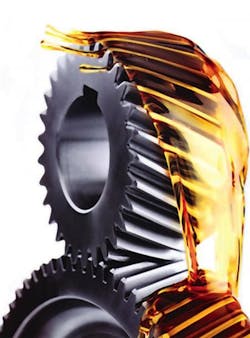Helical gears help manufacturers go green
A trend gaining ground at industrial plants over the past decade has manufacturers replacing traditional spur and worm gears with high-efficiency helical gears. While sometimes viewed as a pricey alternative, in reality, helical gears save energy, run cooler and quieter, require less maintenance, and last longer.
This can mean big savings for manufacturers. Replacing spur gears with helical gears in a 150,000 ft2 snack-food plant, for example, will save one customer of STOBER Drives, Maysville, Ky. about $1.5 million over the next 15 years.
Despite that kind of savings, an estimated half of U. S. manufacturers rely on outdated worm and spur gears that might have low up-front costs, but waste energy and tend to fail prematurely.
Helical advantages
The problem is worm gears are typically bronze, a soft metal, and the gear’s sliding surfaces generate friction that causes wear. This mandates frequent oil changes and means relatively short gear life. (Ironically, hardening worm gears accelerates wear.) In comparison, helical gears experience minimal wear and are practically maintenance-free.
Spur-gear surfaces have rolling contact, but the teeth are cut straight across on a face; one or two teeth are always in contact with another gear. This incomplete face engagement means spur gears are noisier and vibrate more than helical gears.
Another advantage of helical gears over spur gears is in torque capacity. Spur gears, by design, are weaker than helical gears because loads are transmitted over fewer teeth. Helical gearing is machined with angled teeth, then hardened and ground, which is complex but necessary to achieve a high-efficiency gear mesh. Because teeth are cut at an angle, the gears gradually mesh. Two or three teeth of each gear are always in contact with other gears. This alleviates the load on each tooth and creates a smooth transition of forces from one tooth to the next. The result: less vibration, wear, and noise, and longer life.
Some helical gears are virtually maintenance-free. Tooth profiles are so precise there is practically no wear — and units packaged in sealed, oil-filled housings may require no oil changes, which is a boon for the environment as well as the bottom line.
Helical-gear reducers also come in many shapes, sizes, and configurations, letting machine designers eliminate high-wear and high-maintenance parts such as belts, pulleys, chains, and sprockets.
So, although worm and spur gears are less expensive, they have much shorter life spans than helical gears. After about three years they are usually replaced. And frequent replacement requires more capital and drives up maintenance, downtime, and waste-disposal costs.
Higher quality
Another way to compare performance and efficiency is to look at quality. There are two common gear-quality indicators that all engineers understand. One is that too much noise and vibration means low precision and limited life. Rotating machines that are noisy and vibrate can have any number of quality issues: improperly balanced rotating components; mating components with excessive tolerances; and components that are not rigid enough, flexing under load and leading to misalignment.
Noise from helical gearing is approximately 10 to 12 dB(A) lower than that from spur gearing. In human terms, that means 16 helical gear units generate as much noise as eight worm gears or a single spur-gear unit.
The second quality indicator is excessive heat. It equates to low efficiency and wasted energy. Heat generation in rotating machines can also have many causes, including inefficient design, misalignment, incorrect fits, and seal drag. Unfortunately, low-quality gear reducers are major contributors to excessive energy consumption. These gearboxes typically get so hot you cannot keep your hand on them for more than a second or two.
Helical gearing is 20 to 30% more efficient than single-stage worm gearing. That not only means cooler operation. With a 2-hp motor, helical gears can save up to 4,000 kW-hr annually. Or engineers can opt for a smaller motor simply because of lower gear-reducer losses, which saves on the initial investment.
Applications abound
For U. S. manufacturers to remain competitive, they must modernize assembly lines. There are endless miles of conveyors and tons of equipment being driven by inefficient motors and even less-efficient gear drives. Energy audits we have performed show that many factories and processing plants are operating equipment at only 60 to 70% efficiency, leaving ample room for improvement. And while high-efficiency motors are now required by law, gear reducers have unfortunately been virtually ignored by legislators, even though inefficient, low-quality gear reducers are a major contributor to excessive energy consumption.
Highly productive and efficient equipment saves money, energy, materials, and time, and helps domestic manufacturers compete against low-wage labor markets. Going green in manufacturing is no longer an optional, feel-good choice. It is sound business and our opportunity to regain a competitive edge in the global economy. Manufacturers should go green just like every other industry has over the past few years. And when they do, they’ll find that as efficiency rises, so do profits.
Edited by Kenneth J. Korane. For more information, visit STOBER Drives Inc. © 2011 Penton Media, Inc.
